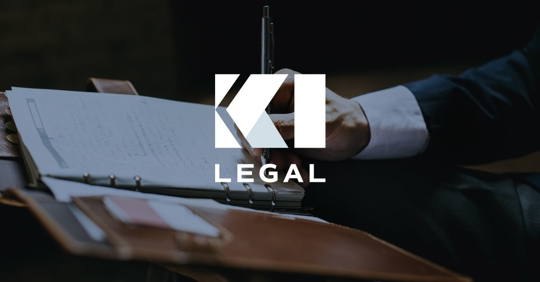Multi-car accidents are unfortunately common in New York City; intersection collisions, lane change impacts, and rear-end accidents are the most repeat offenders. The probability of serious injuries in these chain-reaction collisions is directly proportional to the number of individuals and vehicles involved. If you are ever involved in a multi-car accident, it is important to take the following precautions:
Phase 1: What To Do At The Scene
- Step 1: Call 911 and report the accident to the police and first responders.
- Step 2: Be sure to check yourself, any passengers, and any third party drivers for any injuries that may have been sustained from the accident and need immediate medical attention.
- Step 3: Aside from insurances, do not over-exchange or over-share information with the other drivers until first responders have arrived.
- Step 3: Do not admit fault, even if in that moment you think you are completely innocent.
- Step 4: Offer facts while managing to not over-explain yourself. Be concise and thorough.
- Step 5: Take as many videos as possible to document for further review.
Phase 2: Factoring Fault
Once you have exchanged the proper information with the appropriate parties, your next step will be to determine who is truly at fault. Determining the liability in a multi-car collision is not an easy feat since it can be difficult to identify the car with the most damage. More often than not, the fault is usually on the car that rear-ends another, particularly the first car to rear-end.
Both New York and New Jersey measure the same principle of fault to be on the first car that rear-ends another. In most instances, the driver that rear-ends first has the best opportunity to avoid collisions by driving at safe speeds, keeping safe distances, taking evasive action, and knowing what’s in front of them while driving.
For instance, imagine if three cars are behind one car. All four cars come to a complete halt because there is something in the road. All four cars avoid hitting anything or anyone. Suddenly, a fifth car hits the car in front of it, causing a chain reaction of cars hitting one another. Here, the fifth car would be at fault for the entire chain reaction collision.
However, in some instances, there may be more than one driver at complete fault in chain reaction collisions. This is when the comparative negligence principle comes into play, where each driver has to compare the actions and assign a percentage to those actions of the fault to possibly more than one negligent party. Some factors that come into consideration include:
- Alcohol or Drug Usage: Driving under the influence of alcohol or drugs is extremely dangerous, illegal and one of the leading causes of multi-car accidents.
- Tailgating: When one car is following another vehicle too closely from behind.
- Speeding: When a driver drives too fact, it becomes hard to control the car to avoid a collision.
- Distracted Driving: Any distraction, no matter how small, can cause multiple collisions. Typical distractions include drinking, eating, testing, and talking on the phone.
- Failure to Use Signals: Failure to use the necessary signals when changing lanes or turning can cause an accident. When other drivers do not know another driver’s intentions, confusion, or a collision, can result.
- Weather: Weather conditions like fog, rain and snow can result in low visibility on the road. These conditions can hinder the visibility of other drivers nearby.
Phase 3: Calculating Damages From Fault
- Rear vehicle: In many situations, the rear car which hits other cars first is at fault.
- Front vehicle: The front car can be held liable for driving carelessly in a scenario where the driver stopped suddenly without using necessary safety indicators or precautions.
- Vehicles making unsafe turns or changing lanes improperly: If the car is in the wrong lane or makes an unsafe turn, that driver can be at fault for the accident.
- There is even a possibility vehicle breakdown; if a vehicle malfunctions, the blame may shift to the manufacturer or dealer and not the driver. In cases like these, the victims might sue the manufacturer or dealer.[1]
Whether your accident was caused by multi-car pile-up or a distracted fifth driver, the extent of your recovery will often depend on the specific details of your case. At KI Legal, our dedicated personal injury lawyers will help you obtain your rightful compensation. Regardless of the nature of the accident, your injuries entitle you to compensation for pain and suffering, medical expenses, and present and future lost wages, if someone’s negligence caused your injuries. We are here to help.
[1] 19 Am. Jur. Trials 567.
*ATTORNEY ADVERTISING*
*PRIOR RESULTS DO NOT GUARANTEE A SIMILAR OUTCOME*
This information is the most up to date news available as of the date posted. Please be advised that any information posted on the KI Legal Blog or Social Channels is being supplied for informational purposes only and is subject to change at any time. For more information, and clarity surrounding your individual organization or current situation, contact a member of the KI Legal team.
KI Legal Personal Injury fights for victims of a wide array of personal injury claims, from Motor Vehicle Accidents to Scaffolding and Ladder Falls to Slip/Trip & Falls, amongst others. By leveraging its multidisciplinary foundation and, with the help of its experienced litigators, KI Legal Personal Injury can fight for the results and compensation that victims deserve without pushing for premature settlements due to financial reasons. This financial paradigm shift swings the pendulum in our favor when it comes to negotiating with insurance carriers, inherently leading to better results for clients. For the latest updates.

